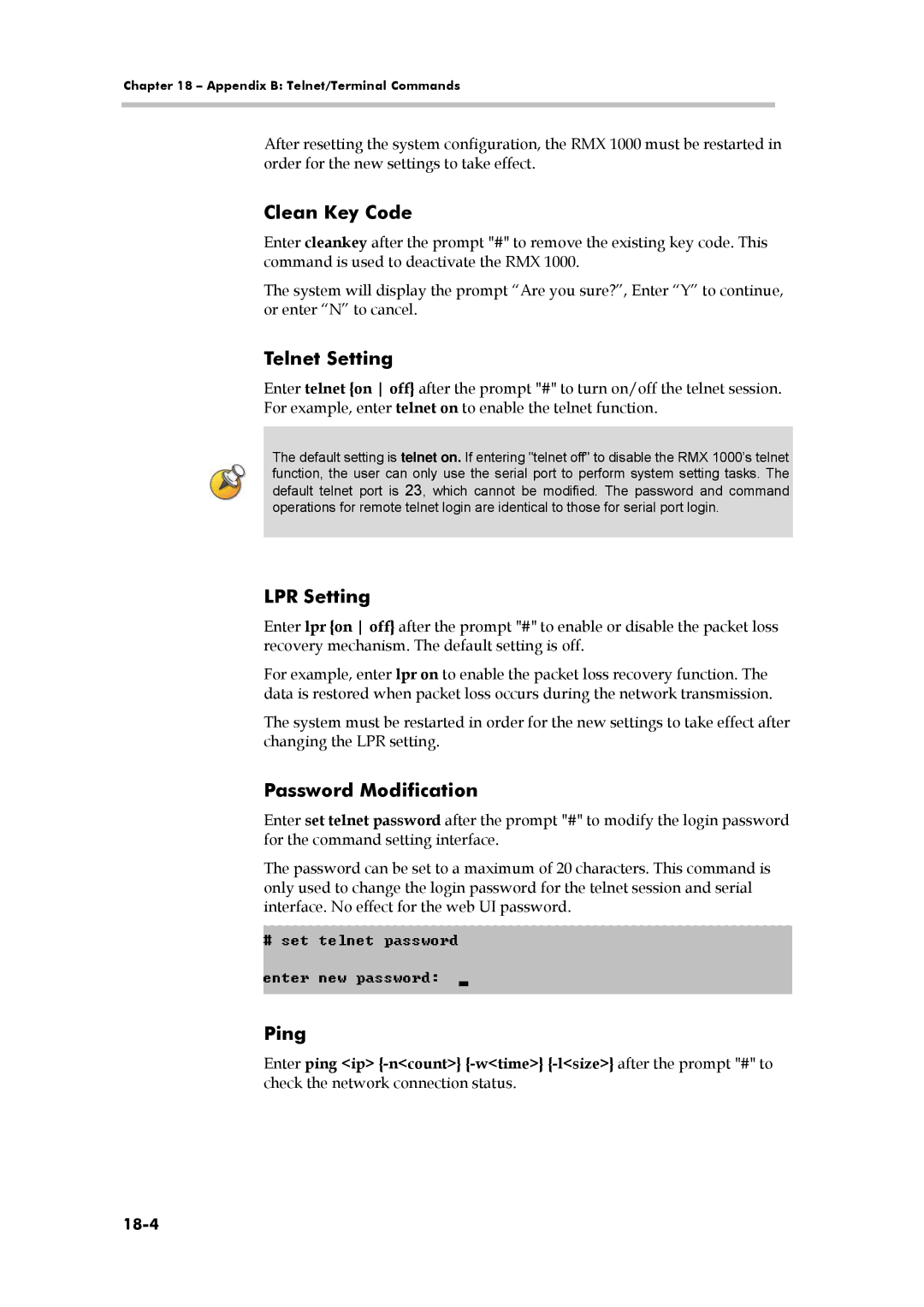
Chapter 18 – Appendix B: Telnet/Terminal Commands
After resetting the system configuration, the RMX 1000 must be restarted in order for the new settings to take effect.
Clean Key Code
Enter cleankey after the prompt "#" to remove the existing key code. This command is used to deactivate the RMX 1000.
The system will display the prompt “Are you sure?”, Enter “Y” to continue, or enter “N” to cancel.
Telnet Setting
Enter telnet {on off} after the prompt "#" to turn on/off the telnet session. For example, enter telnet on to enable the telnet function.
The default setting is telnet on. If entering "telnet off" to disable the RMX 1000’s telnet function, the user can only use the serial port to perform system setting tasks. The default telnet port is 23, which cannot be modified. The password and command operations for remote telnet login are identical to those for serial port login.
LPR Setting
Enter lpr {on off} after the prompt "#" to enable or disable the packet loss recovery mechanism. The default setting is off.
For example, enter lpr on to enable the packet loss recovery function. The data is restored when packet loss occurs during the network transmission.
The system must be restarted in order for the new settings to take effect after changing the LPR setting.
Password Modification
Enter set telnet password after the prompt "#" to modify the login password for the command setting interface.
The password can be set to a maximum of 20 characters. This command is only used to change the login password for the telnet session and serial interface. No effect for the web UI password.
Ping
Enter ping <ip>
